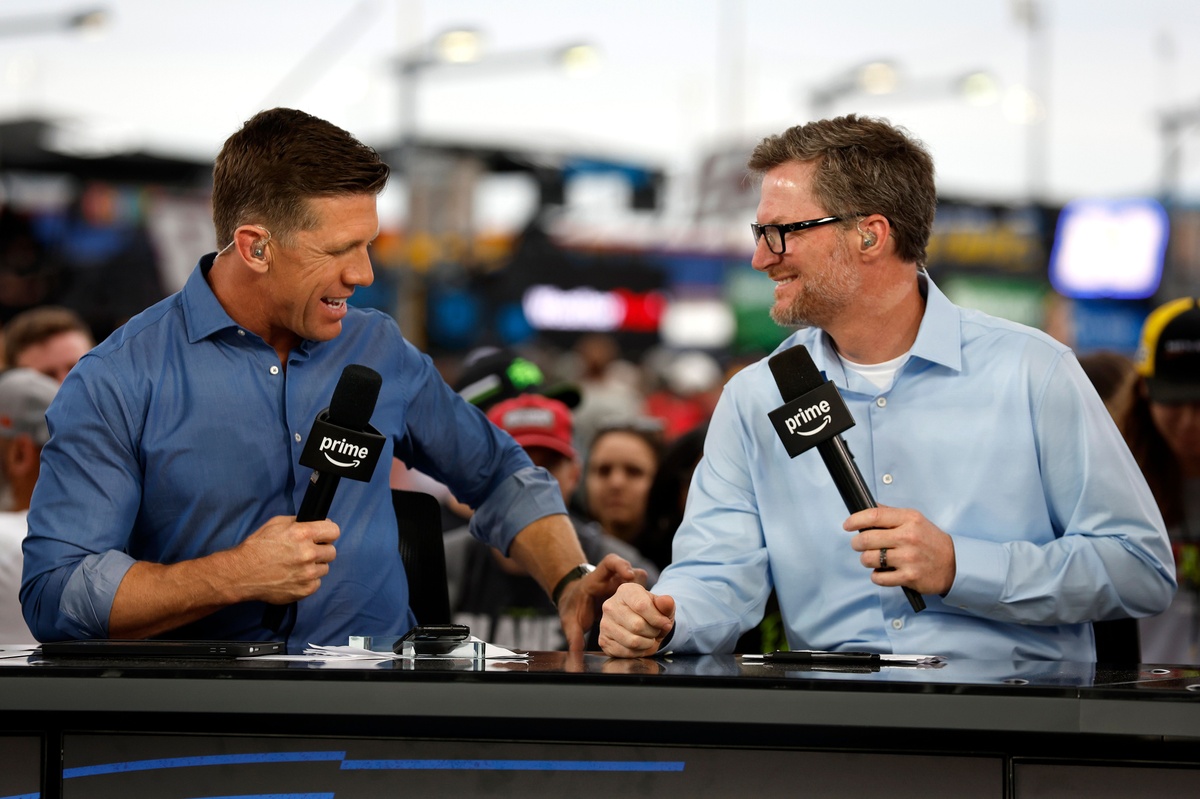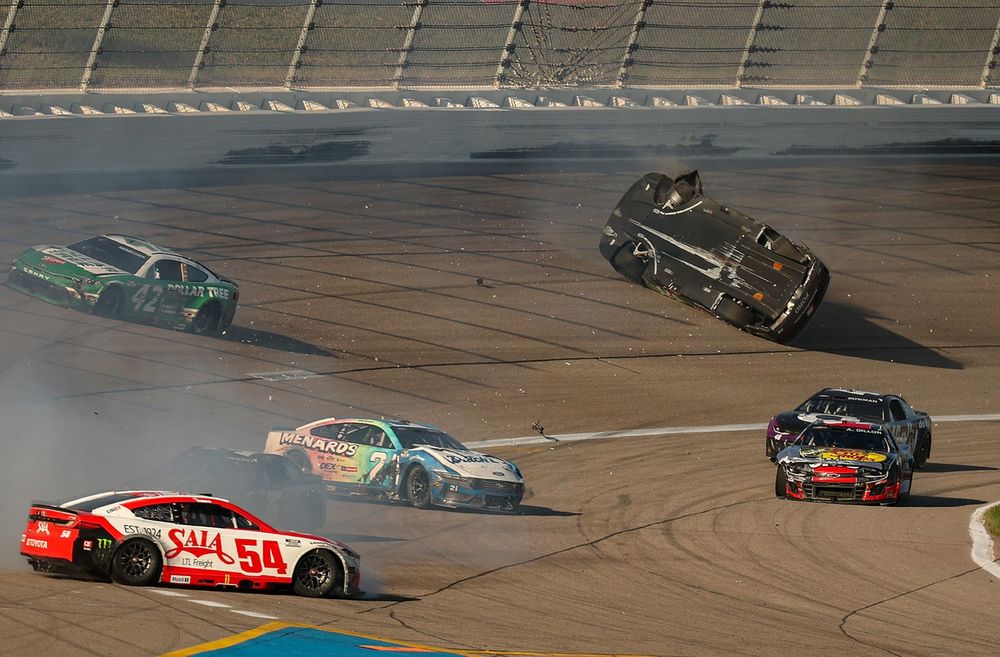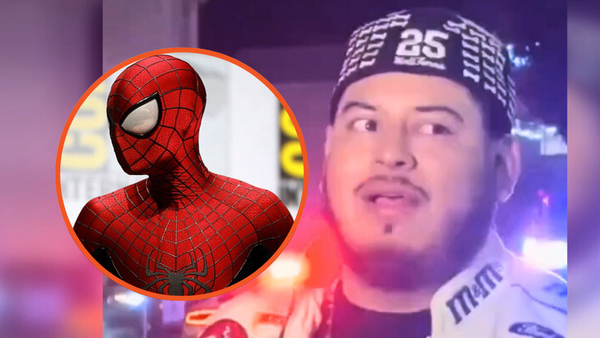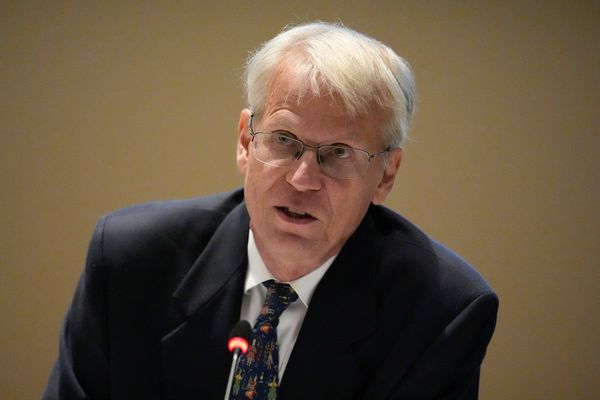
Earlier this week, team executives, broadcast partners, and several other prominent figures got together at the NASCAR Hall of Fame for the 2025 Racer's Forum, engaging in fascinating discussions about the evolving business landscape within the multi-billion dollar sport.
There was plenty on the table for discussion. One of the most illuminating panels of speakers consisted of Alex Strand (Sr. Coordinating Producer, Prime Video), Anthony D’Inverno (VP Content Acquisitions, Warner Bros Discovery Sports), Jessica Forrest (Group Vice President, Nielsen Sports), and Brian Herbst (EVP, Chief Media & Revenue Officer at NASCAR).
What they said could change how the sport is viewed, literally.
Four partners sharing the NASCAR Cup season

This year marked the beginning of a seven-year, $7.7 billion TV media rights deal which splits the Cup Series between four partners, and features some Cup races on streaming for the very first time. Brian Herbst shared how this came about.
“We looked at a content landscape and consumption patterns that were changing," explained Herbst about the decision to split up the broadcast rights. "If you look at the last time we did our TV deal in 2013, cable was in 100 million homes and that was kind of peak cable. We saw NASCAR in particular still as a very strong anchor property across the cable ecosystem with FS1 and USA, but we also wanted to make sure that we diversify our content distribution strategy – making sure we had a presence on broadcast TV with FOX and NBC and CW as well (for the Xfinity Series).
”Cable was still where most of the dollars were from a financial perspective. And then we wanted to make sure we had some kind of digital streaming element which we were able to do with Amazon and HBO Max as well. We wanted to distribute our content differently beyond just broadcast and cable.”
He went on to say that a lot of it was simply timing and certain market dynamics. Herbst and his NASCAR colleagues knew FOX and NBC wanted to return, and while FOX was eager to hold onto the Daytona 500 and cross-promote with its other live sports coverage, NBC was keen to have the run-up to the championship again.
What made negotiations last as long as they did was the summer stretch, as Herbst admitted that it “took a lot of time, thought, and effort.” Ultimately, it led to the addition of Amazon and Warner Bros. Discovery as new partners.
Prime Video changes the game

Starting with NASCAR's longest race -- the Coca-Cola 600, Prime Video became the first to stream a Cup race exclusively, beating many earlier ratings projections.
“Feedback has been tremendous," said Strand about their first year with NASCAR. "Pretty exciting to me. Certainly something we probably couldn’t have imagined the positivity we had received, but we certainly spent a lot of time preparing and making sure we got the sport right, and told the story correctly.”
Amazon was also aggressive in promoting its five-race stretch, leveraging all of the resources at its disposal to advertise these races. And while attracting new and younger eyes to the sport is critical, Strand noted the importance of ensuring existing fans could get to the platform.
Additionally, Prime Video gave fans some relief from constant interruptions due to commercial ad breaks, which has been a common complaint regarding the sport's more traditional network partners.
Most will agree that Prime Video's inaugural season with NASCAR was a success in both viewership and public reception. One of the most popular aspects of it was the extended post-race show with no set end time. Fans had become accustomed to brief or non-existent post-race shows due to time constraints on cable, but it was an issue that did not exist on streaming.
This season also saw the return of NASCAR on TNT, with D’Inverno explaining that there were three main reasons behind it: 1. TNT wanted to continue to invest in prominent sports and capture their audiences; 2. Comfortable relationships with leadership that made things go smoothly; 3. There was a push for them to fill a summer gap in their live coverage, which NASCAR slotted into nicely.
Why Nielsen Sports execs believes NASCAR is 'well-positioned'

Forrest, who represented Nielsen at the forum, applauded the decision by NASCAR to diversify its coverage between traditional media and streaming.
“The hybrid approach that NASCAR has employed is critical in a time where media consumption is as fragmented as it is," she explained. "I think it would be very tough for one rights holder to put all their eggs in one media distribution basket. That would also be very expensive for a media company.
"From a media consumption perspective, while I don’t think linear viewing is going anywhere, we continue to see streaming grow. If we look at total viewing minutes, almost half of those minutes currently are from streaming – 46% as of last month … Streaming certainly can’t be ignored, nor can linear distribution. I think NASCAR is very well positioned.”
Making it easier for fans to find NASCAR

However, this move to split races among broadcast partners hasn't come without setbacks. Viewership during the NASCAR Cup Playoffs has been down a considerable amount on NBC's USA Network, which has raised eyebrows. Could part of the issue be the fact that NASCAR is spread across so many platforms and some fans became overwhelmed?
Forrest believes there is an "adjustment period for fans" and an expected dropoff because of that.
“I’m going to put on my fan hat here, but obviously it’s something we’re keeping a close eye on too," continued Forrest. "Today’s sports are more accessible than they’ve ever been, but it’s also harder to watch sports than it’s ever been – bouncing back and forth between the apps and the subscriptions, regional networks, streaming, linear. I think what I’m anxious to see is how does the industry adapt to that and how does the industry alleviate some of that frustration for the viewer, and make it easier to watch sports and know where to go to find sports.”
Herbst also commented on the notable drop in ratings this fall. He was quick to note how NASCAR over-performed with FOX and Prime Video, and cited several factors for the current trend.
“Going head-to-head against the NFL (which the NASCAR playoffs do every year), last week we had the Charlie Kirk Memorial, and this week we had the Ryder Cup," said Herbst. "The sports calendar gets more and more competitive with each passing year."
Herbst would like to see more presence digitally and even more cross-promotion to help get stronger ratings for USA, but he also expects viewing habits to continue to rapidly evolve over the next couple of years.
He also essentially ruled out running the Daytona 500 on the same week of the Super Bowl, saying that it would be "very, very, very unlikely."
He then added: "We will follow the data. If the data says that you are taking a bigger hit than you used to (going up against the NFL), then we would take that into consideration with the scheduling process.”
As for the viewership demographic, Herbst noted that the sport has already seen a real shift in the audience profile as they near the end of Year One with this deal.
"That 18-34 demographic is up double-digits year-to-year, but conversely, the 50+ demo is down," he revealed.








Read and post comments